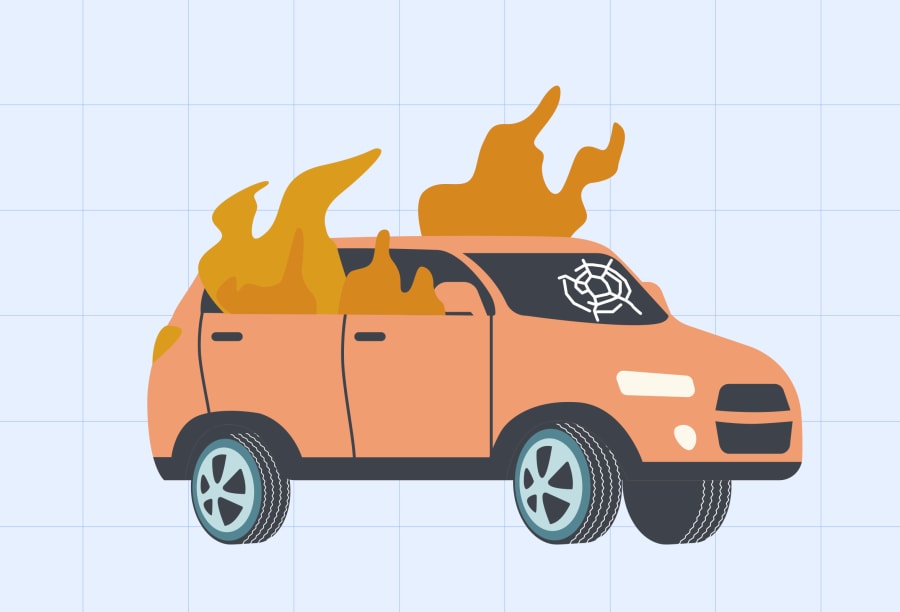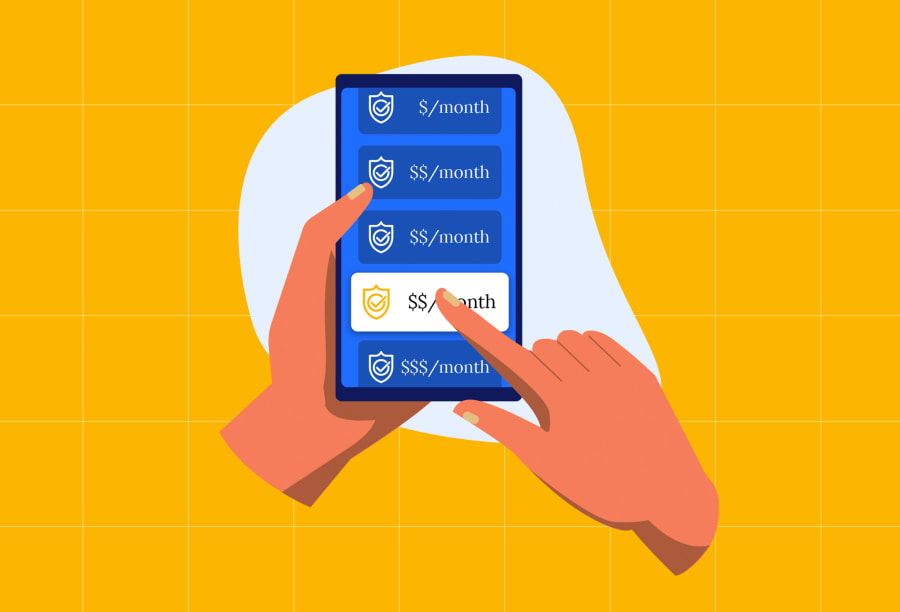Someone Keyed My Car. Will Insurance Cover the Cost to Fix It?
Find Cheap Auto Insurance Quotes in Your Area
Finding your car "keyed," or scratched with a key, by a vandal is frustrating and potentially expensive. The damage can cost $1,000 or more per scratch to fix.
Fortunately, most car insurance policies cover vandalism under comprehensive coverage. However, it might be better not to make a claim if your car isn't worth much or if you've recently made another insurance claim.
Will insurance cover my keyed car?
Damage to the body of a car from vandalism is covered by comprehensive insurance. Comprehensive car insurance pays for damage to your car that doesn't involve a collision with something else (which is covered by collision insurance).
As a result, you can reduce the cost of having the scratch repaired by making a claim to your insurance policy. You'll still be responsible, however, for paying the deductible on your comprehensive coverage for a keyed car. This is the same way any other comprehensive insurance claim would be handled.
If you don't have comprehensive coverage, or if the cost of repairing the scratch costs less than your comprehensive deductible, you'll be responsible for footing the repair bill. But if you can prove who keyed your car, then you can take them to small claims court to recover the cost of the repair, regardless of whether your insurance company paid out a claim.
Will a keyed car claim affect my insurance premium?
If you file an insurance claim to repair your car after it's been keyed, your insurance rates may increase. The extent of this increase will likely depend on your driving record and claim history.
A claim to repair scratches won't affect your auto insurance premiums as much as an accident, especially one where you're at fault. But if the total cost to fix the scratch isn’t much more than your deductible, it probably isn't worth it to file a claim. This is because a small payment from your insurance company could quickly be eclipsed by any increase in your rates.
Your auto insurance rates are most likely to increase after a keyed car claim if you've filed another claim with your car insurer in the last one to two years. The more often you make a claim, the more likely your insurance company is to raise your rates.
How much does it cost to repair a keyed car?
The cost to repair a key scratch varies significantly depending on how deep it is and how far it extends across the body of your car.
Typical cars have three layers of paint: a protective clear coat, a color coat and a white primer. The more layers of paint the scratch penetrates, the more expensive the repair will be.
- Scratch only hits clear coat: If the scratch has not broken through the clear coat, you can likely buff out the scratch yourself or pay $150 to $300 for a repair shop to do it.
- Scratch penetrates clear coat and gets to colored: Scratches that require an auto body shop to reapply the clear coat may cost $400 to $1,000 to fix.
- Scratch exposes primer or bare metal: If you can see the white primer, silver bare metal or plastic in the scratch, a professional repair may cost you $800 to $1,500.
The amount you'll end up paying will also depend on several other factors, including the length of the scratch, the color of your car and your comprehensive deductible.
Additionally, these prices are for repairs to a single body panel. If the scratch extends across more than one panel — such as on front and rear doors — you can expect your bill to increase substantially.
Is it worth it to fix a keyed car?
Since the price of repairing a keyed car can be substantial, you may want to consider whether it's worth it to fix. Consider how the cosmetic damage will affect the car's resale value and whether you're personally bothered by it. If you're planning to sell the car eventually or you find the scratch irritating, it's probably worth fixing. If the scratch is so severe as to cause future damage — like rusting — you might also consider the repair. But if none of those scenarios apply, skip it.
You should also weigh the out-of-pocket expense against how much your car is worth when deciding.
If your car's value is $4,000, it may not be prudent to pay a $1,000 deductible to fix cosmetic damage, regardless of whether you are planning to sell the car. The difference in sale price would likely not surpass your expenses.
But if your car is worth $30,000, then a $1,000 payment is a much smaller percentage of your car's value, and repairing the damage is more likely to be a good investment.
There's also the option to fix the scratch yourself if you decide against professional repairs. Going the DIY route won't look as perfect as a professional job, but exposed metal can rust and lead to more problems later — so it's best to fix it promptly.
What to do when someone keys your car
If you've discovered your car has been keyed, getting it repaired is fairly straightforward. How to fix your keyed car is much the same as filing any other auto insurance claim.
- Document the damage as best you can, and inspect the scene to see if there's security footage or witnesses who might have observed the incident.
- Contact your insurance company to begin the claims process, even if you're not certain you'll actually go through with filing a claim. You'll likely need to have an adjuster inspect the damage in person, as vandalism is a common type of insurance fraud.
- File a police report, documenting where and when the crime occurred. If you can identify the culprit, you and the insurance company will be able to take the offender to court to pay for the damage.
- Have an auto shop inspect your keyed car and put together an estimate. This is especially important if it's possible there's less-visible damage you may have missed, like a cracked bumper.
At this point, you'll decide whether to go ahead with the repair. If you do, the auto body shop will take your keyed car and repair it.
When the job is finished, your insurance company may pay your mechanic directly, in which case you just have to pay the mechanic your deductible. Alternatively, if your insurer pays you, you're responsible for transferring the entire amount to the mechanic.
Editorial Note: The content of this article is based on the author's opinions and recommendations alone. It has not been previewed, commissioned or otherwise endorsed by any of our network partners.


